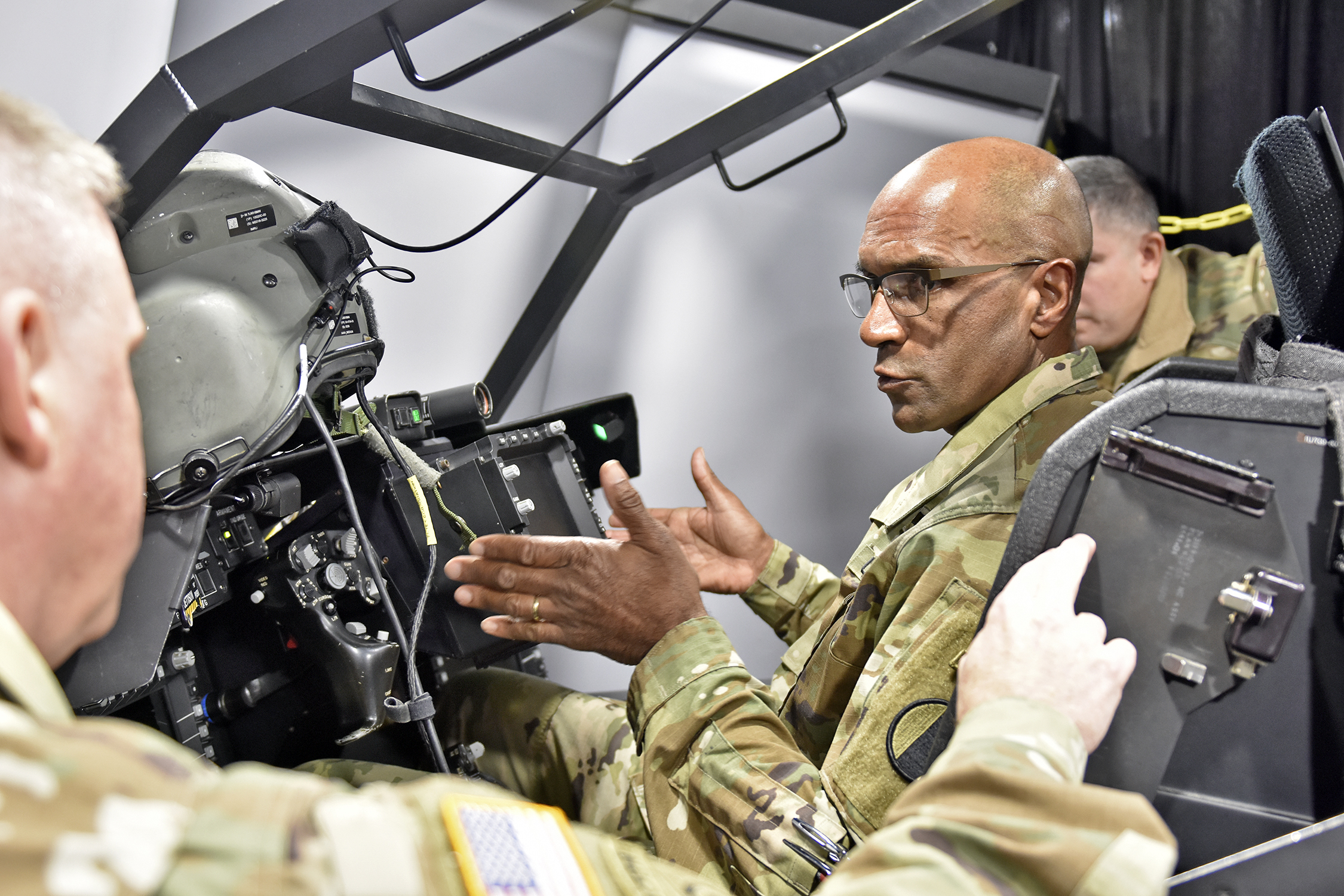[ad_1]

As the Army has adjusted its doctrine and modernized how it prepares soldiers for leadership and combat, the service’s Training and Doctrine Command touches nearly every aspect of those initiatives.
Over the past year, new programs and updates to existing training have flowed across the force.
Army Times spoke with Gen. Gary Brito, head of Training and Doctrine Command, about some of these areas and what they mean for new and career soldiers. Brito took over his current command in 2022 after serving as the Army’s deputy chief of staff over personnel.
The four-star has a deep, personal history within Army training, having served as commander over the Joint Readiness Training Center at Fort Johnson, Louisiana, and twice serving at the National Training Center at Fort Irwin, California, earlier in his career, according to his official biography.
This Q&A has been edited for length and clarity.
What are some additions or changes to Army training from this past year that readers might not have encountered?
Gen. Gary Brito: Over the past year, we’ve made significant improvements to our initial entry training and professional military education. Some of the programs include the quick-fire observation portal that was created by the Center for Army Lessons Learned.
The portal is a web and mobile application that allows users to submit observations. We’ve added foundational skills development to our curriculum. This training promotes skill-specific proficiency, cohesion among soldiers and camaraderie while also aiming to lower harmful behaviors.
The foundational skills include such areas as life skills, from financial planning and time management to suicide prevention and resilience training.
We’ve updated how we consider the operational environment in all that we do to plan for potential large-scale combat.
That document was released earlier this year and explains the current operational environment considerations all soldiers should understand. We’ve also expanded basic combat training, adding more training companies to Fort Leonard Wood, Missouri, and Fort Sill, Oklahoma.
Senior leaders gauge readiness by how units perform at combat training centers. What’s going on to prepare for and take home lessons from a center rotation?
Our mission command training program and warfighter exercises give corps and divisions a chance to conduct collective training, at scale, with multinational partners.
The mission command program specifically focuses on leader development by advising, observing and consulting commanders on how they run their units and how to improve. We also host a quarterly general officer steering committee meeting.
That Army Lessons Learned Forum captures gaps, issues and lessons learned from commanders in various theaters. That forum generates a list of recommended solutions to tactical and operational level concerns that’s disseminated across Army leadership.
How is the Army modernizing its force while still training new and experienced soldiers on evolving doctrine, new equipment and fundamental soldiering?
We are making changes to our program of instruction to accelerate training development. Across our centers of excellence, we incorporate observations and lessons learned to adjust curriculum, training events and cadre and faculty development.
We’re introducing tools and practices such as artificial intelligence, machine learning and human-machine integration. For example, at the Maneuver Center of Excellence at Fort Moore, Georgia, the center has developed and updated various Army training publications to address the use of small drones, counter-drone and aspects of electromagnetic warfare into our courses.
An MCOE team, partnered with Army Futures Command, is experimenting with robotic-enabled maneuver, introducing air and ground robots into live, virtual and constructive training across the spectrum of our courses, from basic training to the captain’s career course.
What are some programs or initiatives you can highlight in Army training for the coming year?
TRADOC is integrating data literacy into Army professional military education. New data literacy curriculums are being developed for the Basic Officer Leader Course, Warrant Office Candidate Course, Basic Leader Course and Advanced Leader Course.
The Cyber Center of Excellence initiated a proof of concept for CamoGPT, a generative AI application that improves productivity and operational readiness at all echelons.
Like ChatGPT, the CamoGPT uses a large language model to incorporate data from joint and Army doctrine, lessons learned, best practices [and] TRADOC content, among other sources.
The Reconfigurable Virtual Collective Trainer is being delivered to the force. It is a hardware system that connects to the Army’s Synthetic Training Environment.
Users can access collective, mixed-reality training scenarios. It has a heads-up display, high-resolution monitor and controllers.
This gives soldiers, squads, platoons and companies the ability to navigate exercises using real and computer-generated movements.
The trainers, which have been installed at Fort Moore, Georgia, and Fort Cavazos, Texas, will allow for collective training with the Abrams tank, Bradley infantry fighting vehicle, Stryker and dismounted troops.
We’re also working to add future vehicle variants and their capabilities, such as the M1256/A1 Infantry Carrier Vehicle Stryker and Maneuver-Short Range Air Defense systems.
Todd South has written about crime, courts, government and the military for multiple publications since 2004 and was named a 2014 Pulitzer finalist for a co-written project on witness intimidation. Todd is a Marine veteran of the Iraq War.
[ad_2]
Source link
